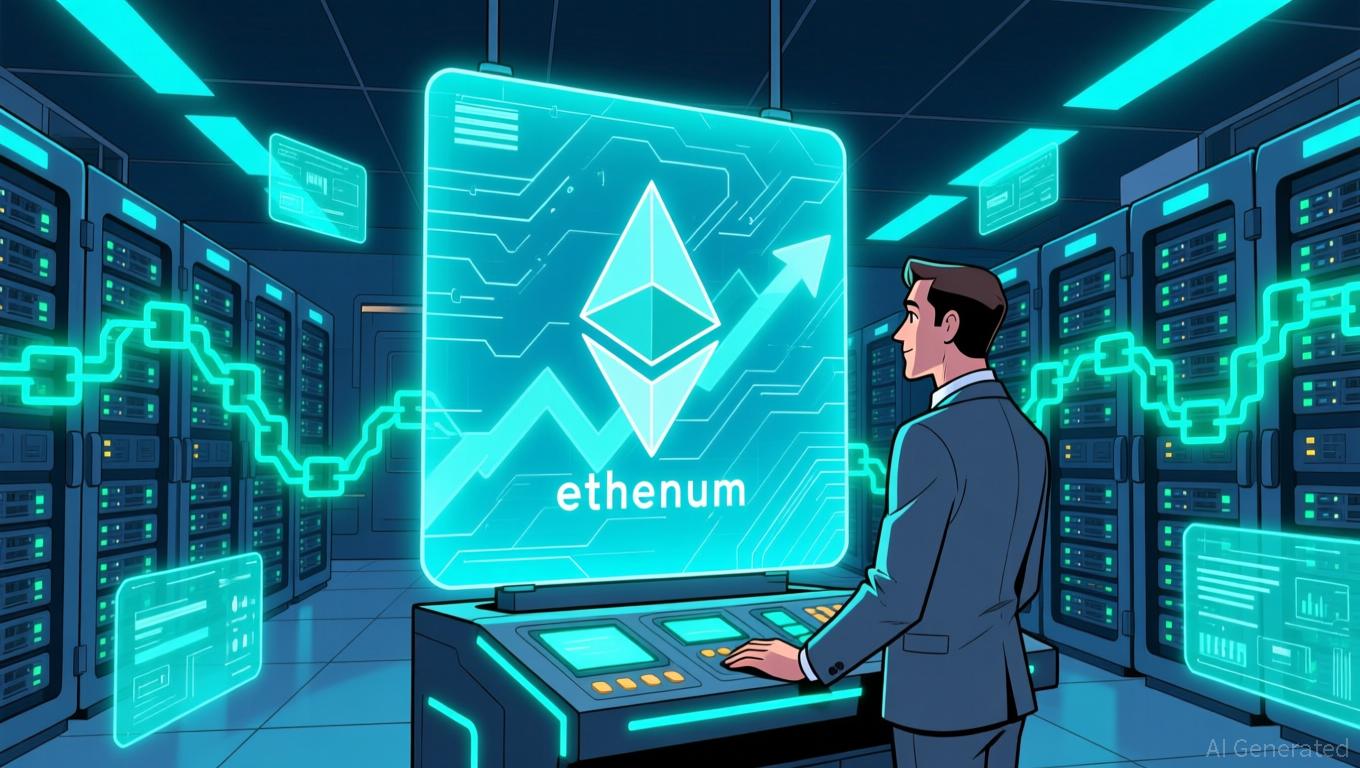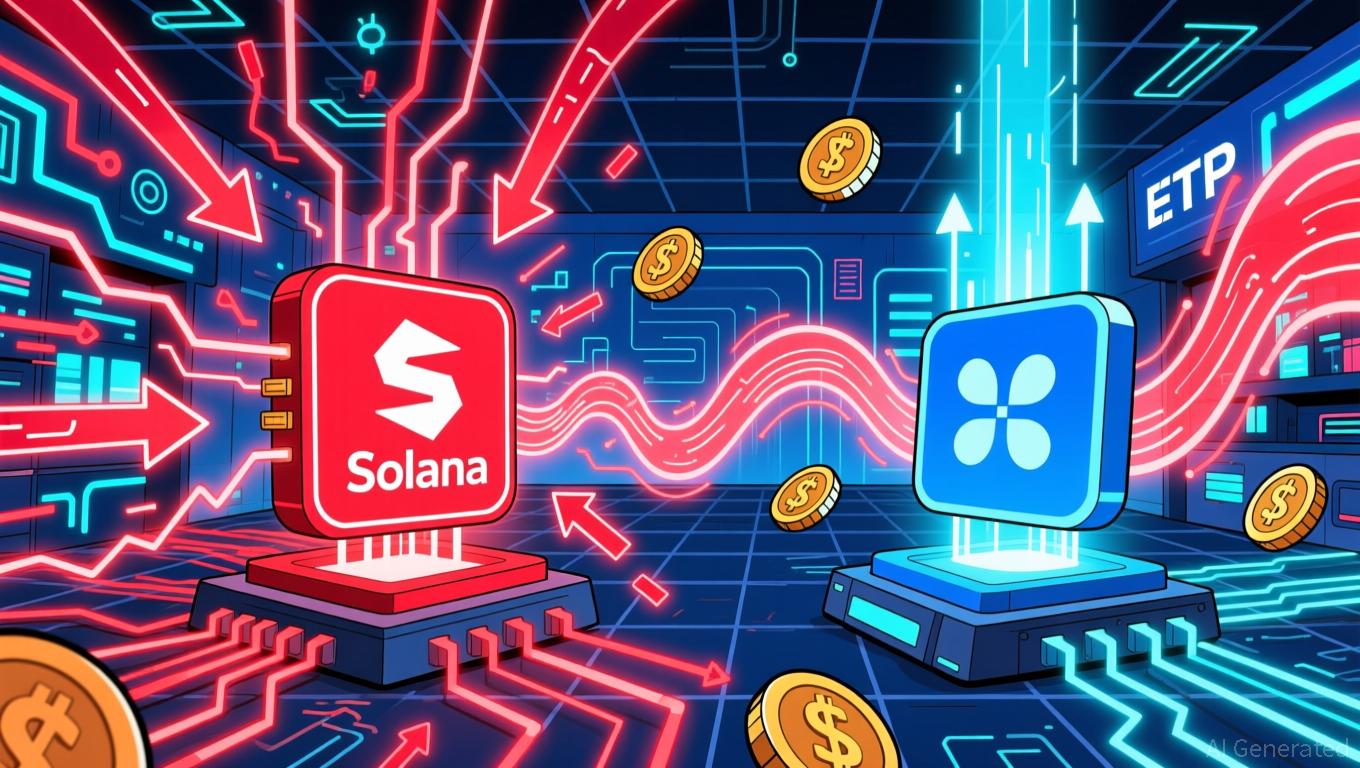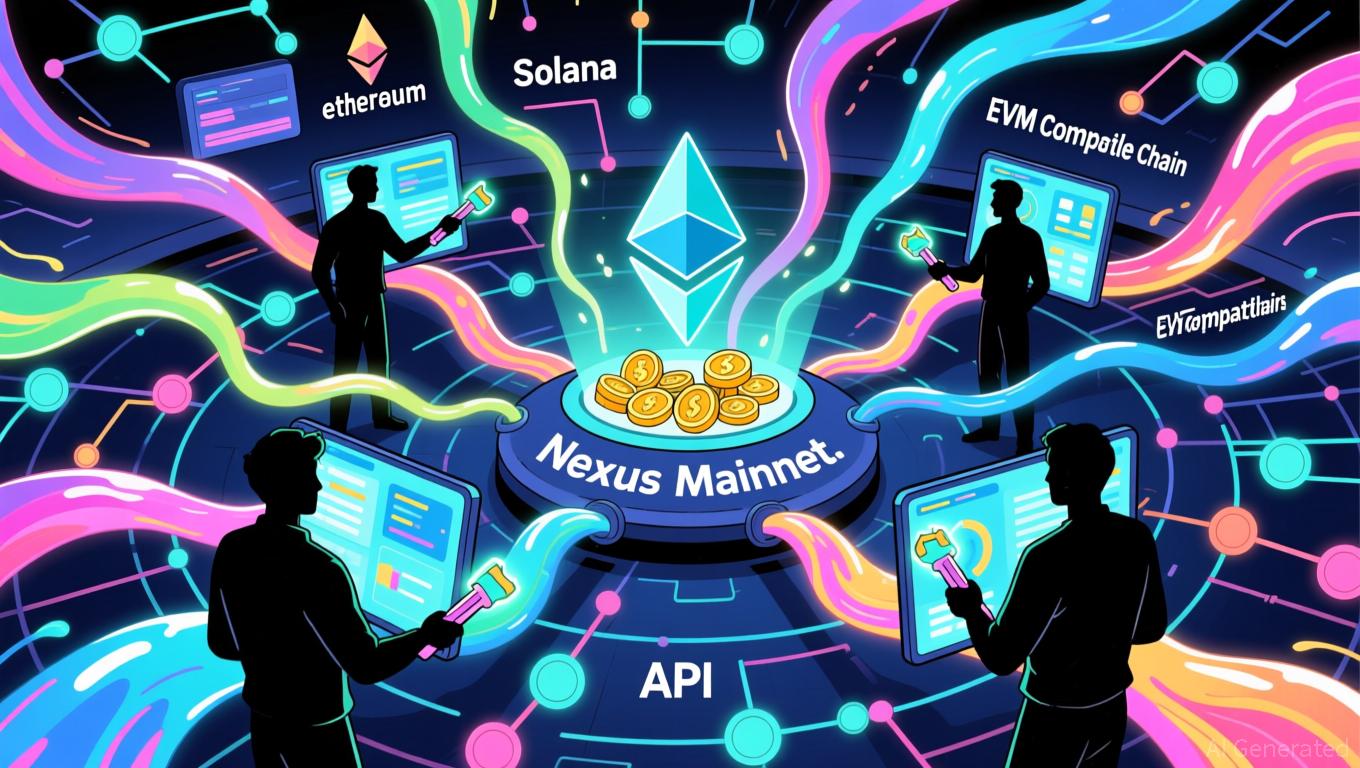Ethereum Updates Today: BitMine's Pursuit of Ethereum 'Alchemy': 3% Ownership Targeting 5% Milestone
- BitMine acquires 3.63M ETH (3% supply), advancing its "Alchemy of 5%" goal to control 5% of Ethereum's network. - Aggressive buying positions BitMine as second-largest crypto treasury globally, with staking via MAVAN stabilizing its balance sheet. - Upcoming Fusako upgrade (Dec 3) aims to boost staking efficiency, but market remains fragile with $3,000 resistance and $2,850 support critical. - Institutional caution grows as Ethereum ETFs see $500M outflows, while analysts question BitMine's $2,840 averag
BitMine Expands Ethereum Holdings, Approaching Major Market Milestone
BitMine has further established itself as a leading institutional holder of Ethereum by acquiring 3.63 million ETH, which accounts for roughly 3% of the cryptocurrency's total circulating supply. This significant purchase is part of a larger accumulation plan, reflecting the company's strong belief in Ethereum's future prospects despite ongoing market fluctuations. With this move, BitMine is edging closer to its ambitious target of controlling 5% of the Ethereum network—a benchmark its research division, Fundstrat, refers to as the "Alchemy of 5%."
Throughout October and November 2025, BitMine has been purchasing up to 200,000 ETH each week, a strategy that has propelled it to the position of the world's second-largest crypto treasury, surpassed only by MicroStrategy's Bitcoin reserves. The average acquisition price stands at $2,840 per ETH, and with Ethereum currently trading above $2,900, the investment is modestly in the black. BitMine is also staking its ETH through the Made in America Validator Network (MAVAN), a move expected to generate returns and help stabilize its financial standing as the broader crypto industry faces liquidity challenges and ETF outflows.

Market Developments and Upcoming Ethereum Upgrade
BitMine's aggressive accumulation coincides with the anticipated Fusako upgrade for Ethereum, scheduled for December 3, 2025. This upgrade is designed to improve token value capture and enhance staking efficiency, which could strengthen investor sentiment. However, market responses have been mixed. For instance, a notable $44 million leveraged long position by the trader known as "1011short" on Hyperliquid signals cautious optimism, though the position is currently facing an unrealized loss exceeding $38,000 and is at risk of liquidation if the price falls to $2,326.60. Ethereum's price remains volatile, with key resistance at $3,000 and crucial support at $2,850 shaping short-term market stability.
Institutional Sentiment and Market Flows
Despite BitMine's confidence, institutional investors remain wary. Last week, Ethereum-focused investment products saw net outflows totaling $589 million, with U.S. spot ETFs responsible for $500.2 million of that figure. Additionally, several high-profile initiatives, such as a $1 billion Ethereum Digital Asset Treasury (DAT) led by prominent Chinese crypto investors, have been put on hold due to market softness. Sharplink Gaming, the second-largest institutional ETH holder, recently transferred 5,442 ETH to Galaxy Digital, prompting speculation about possible portfolio adjustments or over-the-counter deals.
Analyst Reactions and Future Outlook
BitMine's reported average purchase price of $2,840 has drawn scrutiny from analysts, who question the accuracy of the figures based on the company's disclosed holdings. Nevertheless, Tom Lee, BitMine's chairman, continues to express optimism, highlighting Ethereum's attractive risk-to-reward ratio as the network nears the Fusako upgrade. The success of BitMine's staking approach and the market's ability to maintain the $2,850 support level will be critical factors in determining whether Ethereum can sustain its current recovery momentum.
Disclaimer: The content of this article solely reflects the author's opinion and does not represent the platform in any capacity. This article is not intended to serve as a reference for making investment decisions.
You may also like
Ethereum News Update: Amundi’s Integrated Approach Connects Blockchain with Conventional Financial Regulations
- Amundi, Europe's largest asset manager, launched its first Ethereum-based tokenized money-market fund, enabling 24/7 settlements and transparent record-keeping via blockchain. - The hybrid model, developed with CACEIS, combines traditional fund operations with blockchain-based ownership, preserving regulatory compliance while expanding investor access. - Ethereum's dominance in stablecoin and RWA transfers ($105.94B in 30 days) underscores its role in accelerating tokenization, with Amundi positioning it

XRP News Today: XRP ETFs Drive Price Increases, While Solana ETFs Ease Selling Pressure
- XRP ETFs raised $587M in inflows since late November, outpacing Solana's $568M as investors favor altcoins with regulatory clarity and utility. - Bitwise XRP ETF's $107M debut and zero-fee strategy drove momentum, while Solana ETFs faced $156M weekly outflows due to network reliability concerns. - XRP's inflows acted as a "battering ram" pushing prices above $2.27, contrasting Solana's ETFs which merely dampened sell pressure without reversing its decline. - Analysts predict XRP could reach $3 by Decembe

The Federal Reserve's Change in Policy and Its Impact on Alternative Cryptocurrencies Such as Solana
- Fed's 2025 policy shifts, including rate cuts and stablecoin regulations, are reshaping altcoin markets by altering liquidity and risk appetite. - Solana's Alpenglow upgrade (150ms finality, 1M TPS) addresses scalability issues, aligning with Fed's AI-driven infrastructure focus despite network reliability concerns. - Institutional inflows into Solana ETFs ($100M AUM) contrast with retail caution (78% HODLers in red), highlighting divergent risk perceptions amid 30% price corrections. - Divergent ETF flo

Avail's Intent-Driven Nexus Addresses the Issue of Fragmented Liquidity Across Chains
- Avail launches Nexus Mainnet, a cross-chain solution unifying liquidity across Ethereum , Solana , and EVM networks. - The intent-solver model enables seamless asset transfers without technical complexities, streamlining user experiences. - Developers gain modular tools for multichain integration, reducing costs as cross-chain liquidity demand grows. - Nexus abstracts execution layers, offering unified balances and execution while addressing fragmentation challenges. - With $50B+ in cross-chain activity
